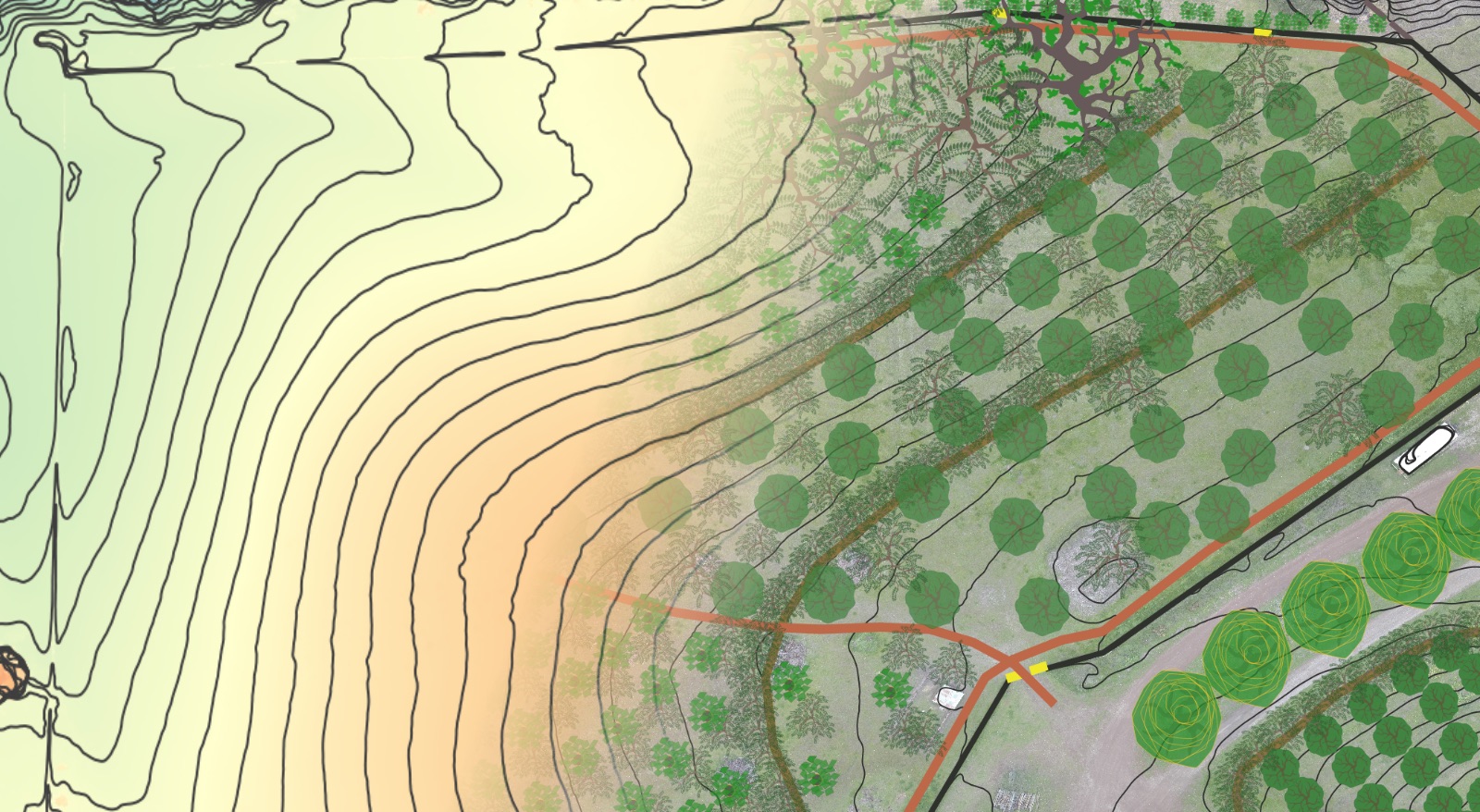There are two general methods to establish silvopasture – by addition or by subtraction.
- Silvopasture by subtraction: starts with forest or scrubby undergrowth, many trees and woody shrubs must first be removed in order to open up the understory and overhead canopy to let in enough light to grow grazeable forages on the ground.
- Silvopasture by addition: starts with open pastures and adds trees into them.
This post details a method for silvopasture by addition pioneered by Wyn Miller of Lick Skillet Farm for establishing high-value trees for livestock forage, fodder and shade in actively grazed pastures managed for commercial livestock production. Her method utilizes tree tubes with electrified polybraid wrapped around them and energized by an overhead hotwire to allow free animal (and human and vehicle movement) amongst the establishing trees.
Wyn has primarily developed these methods for establishing trees in active cattle pastures. The same process should work just as well for sheep, and very likely would require even less electrification. This method has a demonstrated survival rate of >90% for young trees, and has lowered per-tree establishment costs after 2 years from $50 down to <$25 (pending labor rates and material prices). See Wyn walk through this tree establishment method in the webinar from Appalachian Sustainable Development.
An additional benefit of this method is that, unlike hard fencing around each tree, grazing animals can graze right up to within an inch or two of the tree trunk, eliminating the need for weeding around the trees, and thus saving a huge amount of labor during the tree establishment phase.
The following components are utilized to create protection for individual trees:
- Plantra 71” SunFlex Tree Tubes – specifically the 71″ tall (for protection from deer browsing), 4” diameter, with ¼” vertical slits for ventilation
- Plantra Trunk Builder Reinforced Fiberglass Stake – 84” tall, flexible stake that will bend quite a ways before breaking – allows trees to move with the wind, and won’t snap if an animal pushes on them.
- Plantra Twist Lock Soft Wire Tie – for tying tubes to stakes and anchoring polybraid on the tube.
- Polybraid for connecting lines of tree tubes and for wrapping around each tube (also for daily grazing management).
- Poly mesh net bags for bird exclusion from the top of each tube – similar to this or this.
The process for protecting each tree is as follows:
- Set end posts to maintain elevation and tension in the electrified polybraid. Recommend utilizing 1” or 1.25” fiberglass rods set at an angle to maintain tension.
- Plant and prune the tree to a single leader without side branches. This will allow the tree to fit into the tube and focus its’ growth energy on the upper growing tips.
- Drive in the stake approximately 2-3” from the trunk of the tree.
- Slip on the tree tube.
- Label the tube if desired (tree species/cultivar, date planted, specific care notes etc).
- Add insulated wire fasteners to connect the tree tube to the fiberglass stake.
- Wrap the tube with a piece of polybraid, winding it several times around the tube, and fastening the bottom end to one of the insulated wire fasteners. Connect this piece of polybraid at the top to the energized polybraid or high-tensile wire at 6’ height to allow free movement of grazing animals underneath and around each tree tube. If wild pigs are present recommend running the polybraid down to the bottom of the tree tube just above ground level to discourage rooting.
- Top the tube with the small ploy mesh net bag to prevent birds from getting trapped in the tube.
- Energize and test the system.
NOTE: This type of set up, with an energized polybraid or high-tensile wire connecting a row of trees, does hamper vehicle access. Where vehicle access across rows of trees is desired or required, use the couplers made by Plantra (not currently listed on their site) or zip ties to secure an additional 3’ stake on top of the 7’ stakes to create the extra clearance needed to allow vehicle traffic.




